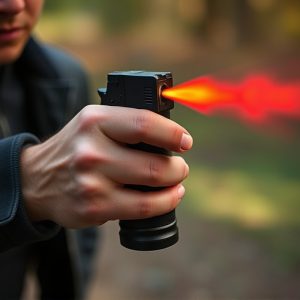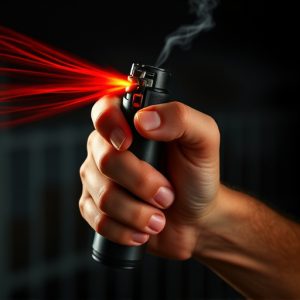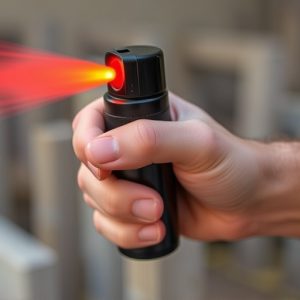Police-Grade Pepper Spray: Effective Defense Training Tips
Pepper spray, a non-lethal force tool, temporarily incapacitates attackers by irritating sensitive a…….
Pepper spray, a non-lethal force tool, temporarily incapacitates attackers by irritating sensitive areas via capsaicin from chili peppers. Effective pepper spray defense training tips include understanding its mechanism, proper deployment techniques, and minimizing impact on bystanders to deter threats without causing collateral damage. Police-grade formulations target eyes, nose, and respiratory system, offering tactical advantages in high-risk situations while protecting bystanders. Personal safety training focuses on mechanics, device practice, realistic scenarios, assessment techniques, deployment accuracy, decontamination, and post-spray medical aid, enhancing swift and effective responses during unexpected encounters.
“Uncover the power of police-grade inflammatory pepper spray, a potent compound designed for law enforcement and personal defense. This versatile agent has become an essential tool in various security sectors. In this article, we’ll explore its unique composition and effects, dissecting the key features that make it so effective. Additionally, discover practical training techniques to master Pepper Spray Defense, ensuring you’re prepared with valuable tips for real-world scenarios.”
- Understanding Pepper Spray: The Compound and Its Effects
- Police Grade Pepper Spray: Key Features and Advantages
- Effective Pepper Spray Defense Training Techniques
Understanding Pepper Spray: The Compound and Its Effects
Pepper spray, a powerful defense tool, is a compound designed to temporarily incapacitate an attacker by causing discomfort and pain. It works by irritating the eyes, nose, and respiratory system, leading to temporary blindness, coughing, and difficulty breathing. This non-lethal force option has become a staple in police equipment and self-defense training due to its effectiveness in neutralizing threats without causing permanent harm.
Understanding the compound’s mechanism is crucial for anyone considering Pepper Spray Defense Training Tips. The active ingredient, capsaicin, is derived from chili peppers and creates a burning sensation when it comes into contact with sensitive areas. Proper training ensures individuals know how to deploy the spray effectively and safely, minimizing its impact on bystanders and maximizing its deterrence factor during encounters.
Police Grade Pepper Spray: Key Features and Advantages
Police-grade inflammatory pepper spray is designed for law enforcement agencies and offers advanced protection during high-risk situations. Its key features include a powerful formula that delivers a swift and effective neutralizing agent, typically composed of capsaicin in concentrated form. This compound targets the eyes, nose, and respiratory system, temporarily disabling suspects while ensuring officer safety.
The advantages of such spray are numerous when it comes to Pepper Spray Defense Training Tips. It provides a non-lethal option for control, allowing officers to manage volatile scenarios without escalating violence. The spray’s long-lasting effects enable tactical operations, giving law enforcement the upper hand in potentially dangerous encounters. Additionally, its precision nozzle ensures accurate deployment, minimizing collateral damage and protecting bystanders.
Effective Pepper Spray Defense Training Techniques
Pepper spray defense training tips are essential for individuals looking to protect themselves in various situations. The first step is understanding how pepper spray works and its effects on the human body. Pepper spray is designed to cause a burning sensation, temporary blindness, and difficulty breathing when inhaled. Training should include practice with different types of pepper spray devices, such as aerosol canisters or foam guns, to familiarize oneself with their range, accuracy, and deployment mechanics.
Realistic scenarios and simulations are crucial for effective pepper spray defense training. Participants should learn how to assess a situation, determine the distance and angle of the attacker, and deploy the spray accordingly. Training sessions must also cover post-spray techniques, including how to seek medical attention if necessary, maintain safety until help arrives, and decontaminate oneself from residual spray. Regular practice ensures individuals are prepared for unexpected encounters and can respond swiftly and effectively.
Pepper spray, a powerful tool in law enforcement and self-defense, has evolved into an effective deterrent. Understanding its compound and effects is crucial for both police officers and individuals seeking Pepper Spray Defense Training Tips. Police-grade pepper spray offers enhanced key features and advantages, making it a strategic choice. By mastering defense techniques, users can navigate challenging situations with confidence, ensuring their safety and well-being.


